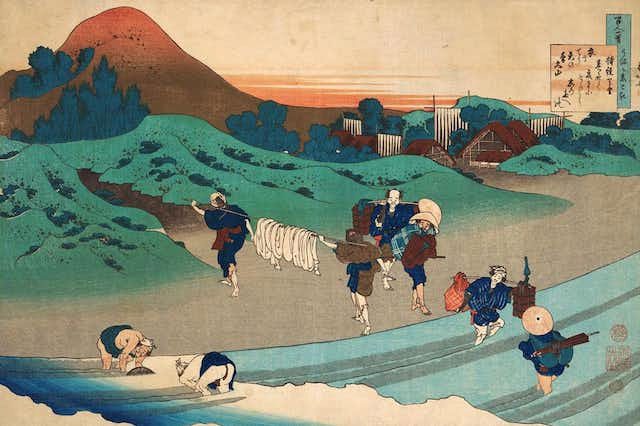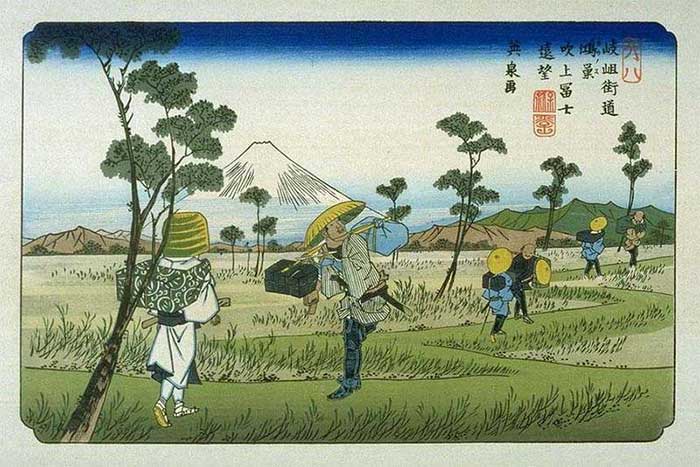The “Sakoku” policy, or seclusion policy, which isolated Japan for over two centuries, had surprising effects, according to historians.
In the early 17th century, at the dawn of the Edo period, fearing foreign influence through missionary activities, the Japanese government at the time, the Tokugawa Shogunate, enacted the “Sakoku” policy to prevent foreigners from entering the country and to stop Japanese citizens from leaving.

In the early 17th century, the Tokugawa Shogunate enacted the “Sakoku” policy.
In terms of diplomacy and foreign trade, Japan at that time was almost entirely closed off, both in terms of exports and imports, a situation that lasted until 1868 when the Meiji era began, spanning over 200 years.
Although this policy stifled cultural exchanges between Japan and other countries, according to The Conversation, it allowed the unique culture, customs, and lifestyle of the Land of the Rising Sun to develop independently, much of which has been preserved in art forms that exist to this day, such as haiku poetry and kabuki theater.
A Self-Sufficient Yet Efficient Economy
This meant that the Japanese, living under a system that tightly restricted trade, had to rely entirely on domestically available resources, resulting in a burgeoning economy focused on reuse and recycling.

The Japanese lived under a system that tightly restricted trade.
In fact, Japan was self-sufficient in resources, energy, and food, sustaining a population of up to 30 million people without using fossil fuels or chemical fertilizers—a remarkable achievement for an isolated island nation with 80% of its land being mountainous.
People during the Edo period lived a lifestyle today referred to as “slow living“, characterized by sustainable practices that actively minimized waste. Even light was not wasted—daily activities began at sunrise and ended at sunset.
Clothing was mended and reused multiple times until it was no longer wearable. Ash and waste were repurposed as fertilizer, leading to a thriving business for those who collected these materials and sold them to farmers. This could be described as a primitive circular economy.

A painting depicting daily life, washing clothes during the Edo period.
Fortunately, despite the strict implementation of the Sakoku policy, the Tokugawa government was acutely aware of the economic conditions of a pre-industrial East Asian country that relied heavily on agriculture. The shogunate promoted land reclamation policies and anti-waste initiatives, especially focusing on expanding and continuously reclaiming arable land.
In addition to improving irrigation systems, Japanese agriculture during this period was still capable of producing enough to feed tens of millions of people.
Moreover, the continued emphasis on developing commerce, industry, and handicrafts in a relatively industrious society with a long-lasting peace created conditions for the growth of a commodity economy, facilitating the accumulation of wealth for the emergence of a new class during the Edo period—the bourgeoisie, as well as wealthy peasant classes, which fueled the Meiji Restoration.
Harmony with Nature
Another characteristic of slow living was the use of calendars and seasonal time measurement. In countries influenced by East Asian culture and in pre-modern Japan, the 12 zodiac signs (known in Japanese as juni-shiki) were commonly used to divide a day into 12 two-hour segments.
During the Edo period, this system was used to divide the time between sunrise and sunset into six “kan chi” hours. Therefore, the length of a “kan chi” hour varied significantly depending on whether it was measured in summer, winter, night, or day (especially in a country located at a high latitude like Japan). The idea of adjusting life by fixed units of time like modern minutes and seconds simply did not exist.

A painting depicting the Kōnosu-shuku station on the Edo-Kyoto highway in the early 19th century.
Instead, the people of Edo, who did not own clocks, measured time by the sound of bells installed in castles and temples. Allowing the natural world to govern life in this way fostered a sensitivity to the seasons and their richness, helping to develop a set of cultural values that were environmentally friendly.
From the mid-Edo period onwards, rural industries and handicrafts—including cotton weaving, oil production, sericulture, paper making, and the production of sake and miso—began to flourish. People organized seasonal festivals featuring a variety of rich and diverse local foods, praying for fertility during the cherry blossom season and expressing gratitude for the autumn harvests.
This unique, environmentally friendly social system emerged partly out of necessity but also from a profound cultural experience of living closely with nature. This wisdom needs to be embraced in the modern era to achieve a more sustainable culture—and there are modern practices that the Japanese still engage in that can be beneficial.
For example, zazen, or “seated meditation”, is a Buddhist practice that can help individuals create a peaceful and quiet space to experience the sensations of nature. Today, some urban temples still hold meditation sessions for citizens.
A second example is “forest bathing” (shinrin-yoku), a term coined by Japan’s forestry agency in 1982. There are various forms of forest bathing today, but the most popular involves spending time without electronic devices to immerse oneself in the tranquility of a forest.
Such activities can help develop an appreciation for the beauty of nature, which could lead us to a more sustainable lifestyle—a lifestyle that the Edo residents of Japan highly valued.
In an era where the demand for a more sustainable lifestyle has become a global issue, we can respect the wisdom of the Edo people, who lived with a seasonally changing time frame, valued materials, and emphasized recycling.


















































